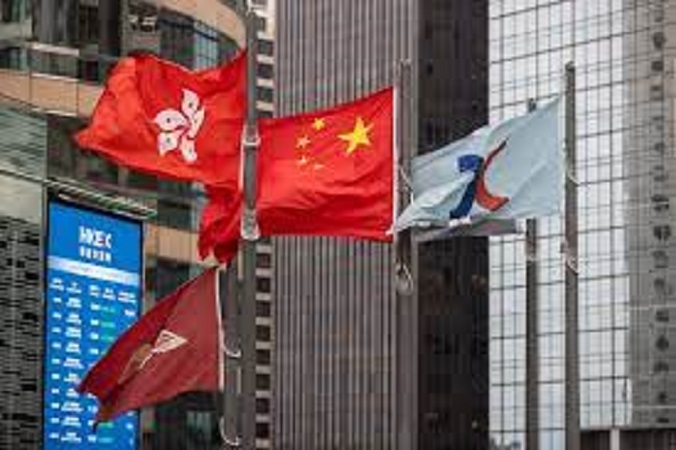
Hong Kong’s Legislative Council passed the Stablecoins Bill, establishing a licensing regime for fiat-referenced stablecoin (FRS) issuers. The new law requires entities issuing stablecoins in Hong Kong, or those tied to the Hong Kong dollar (HKD) anywhere, to obtain a license from the Hong Kong Monetary Authority (HKMA).
Key requirements include full reserve backing with high-quality, liquid assets, proper segregation of client funds, robust stabilization mechanisms, and timely redemption at par value with reasonable fees. Only licensed institutions can offer FRS to retail investors, and advertising is restricted to licensed issuers to prevent fraud.
The legislation aims to enhance financial stability, protect investors, and foster innovation in Hong Kong’s virtual asset sector, aligning with international standards. It builds on the HKMA’s stablecoin sandbox launched in 2024, which includes participants like Standard Chartered, Hong Kong Telecom, Animoca Brands, JD.com’s Coinlink, and RD Innotech. The ordinance is expected to take effect later in 2025, with transitional arrangements allowing existing issuers to apply for licenses within three months and continue operations for up to six months pending approval.
Register for Tekedia Mini-MBA edition 17 (June 9 – Sept 6, 2025) today for early bird discounts. Do annual for access to Blucera.com.
Tekedia AI in Business Masterclass opens registrations.
Join Tekedia Capital Syndicate and co-invest in great global startups.
Register to become a better CEO or Director with Tekedia CEO & Director Program.
This move positions Hong Kong as a global leader in regulated digital finance, competing with jurisdictions like the EU and Singapore. The passage of Hong Kong’s Stablecoin Bill on May 21, 2025, carries significant implications for the stablecoin market, financial innovation, and investor protection in Hong Kong, while also highlighting a divide between regulated and unregulated players in the crypto space.
The requirement for stablecoin issuers to hold full reserve backing with high-quality, liquid assets and segregate client funds minimizes risks of insolvency or mismanagement, as seen in past stablecoin failures like TerraUSD. Strict licensing by the Hong Kong Monetary Authority (HKMA) ensures only credible entities operate, reducing fraud and enhancing trust among retail investors. Timely redemption at par value with reasonable fees protects consumers from losses due to de-pegging or excessive costs.
Boost to Hong Kong’s Crypto Hub Ambitions
The bill positions Hong Kong as a global leader in regulated digital finance, competing with jurisdictions like the EU (with its MiCA framework) and Singapore, which also regulate stablecoins. By fostering a clear regulatory framework, Hong Kong attracts institutional players, such as Standard Chartered and JD.com’s Coinlink, already testing in the HKMA’s stablecoin sandbox. The legislation could drive adoption of HKD-pegged stablecoins, strengthening Hong Kong’s role in cross-border digital trade and payments.
The sandbox and licensing regime encourage innovation by allowing issuers to test stablecoin products under supervision, balancing experimentation with risk management. The focus on fiat-referenced stablecoins (FRS) tied to HKD or issued in Hong Kong creates a controlled environment for blockchain-based financial products, potentially spurring fintech development.
The extraterritorial scope—requiring licenses for HKD-pegged stablecoins issued globally—extends Hong Kong’s regulatory reach, potentially influencing international issuers to align with its standards. The framework aligns with global recommendations from bodies like the Financial Stability Board, enhancing Hong Kong’s credibility in international finance.
The Stablecoin Bill creates a clear divide between regulated, licensed issuers and unregulated or non-compliant entities, with significant consequences for the market. Licensed issuers, such as those in the HKMA sandbox (e.g., Standard Chartered, Animoca Brands), gain legitimacy and access to retail markets, boosting investor confidence. Compliance with reserve and transparency requirements positions them as trusted players, likely attracting institutional and retail capital.
They benefit from Hong Kong’s reputation as a regulated crypto hub, potentially drawing global partnerships and investment. High compliance costs (e.g., maintaining reserves, audits, and reporting) may deter smaller firms or startups with limited resources. Strict advertising rules limit marketing flexibility, potentially slowing retail adoption compared to less-regulated jurisdictions.
Unlicensed issuers are barred from offering stablecoins to retail investors in Hong Kong, severely limiting their market access. Those issuing HKD-pegged stablecoins globally without a license face enforcement actions, risking fines or exclusion from Hong Kong’s market. The ban on advertising by unlicensed entities reduces their visibility, pushing them to less-regulated jurisdictions with weaker investor protections.
Some may pivot to issuing non-HKD stablecoins (e.g., USD-pegged) to skirt Hong Kong’s rules, though this limits their relevance in HKD-based markets. Others might operate in jurisdictions with lax regulations, creating a fragmented global stablecoin market where trust and interoperability vary widely. The divide could consolidate the stablecoin market in Hong Kong around a few licensed, well-funded players, reducing competition but increasing stability.
Unregulated stablecoins, like Tether (USDT) or USDC, may face scrutiny if they seek to operate in Hong Kong without licenses, potentially reshaping their market strategies. The transitional period (three months to apply, six months to operate pending approval) offers a grace period but pressures non-compliant issuers to either align or exit. The divide may push unregulated issuers to jurisdictions with minimal oversight, creating a two-tier global market: regulated hubs (e.g., Hong Kong, EU) versus unregulated ones (e.g., certain offshore jurisdictions).
Retail investors gain safer access to stablecoins but may face fewer choices due to the exclusion of unlicensed issuers. The bill widens the gap between traditional finance (e.g., banks like Standard Chartered) and crypto-native firms, with the former better equipped to meet regulatory demands. Hong Kong’s move strengthens its financial autonomy within China, where crypto trading remains banned, signaling a strategic push to capture global digital asset markets.
The Stablecoin Bill enhances Hong Kong’s position as a regulated crypto hub, prioritizing stability and trust but creating a stark divide between compliant and non-compliant issuers. This could reshape the stablecoin landscape locally and globally, favoring institutional players while challenging smaller or unregulated entities to adapt or relocate.



